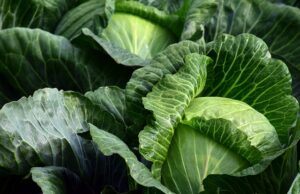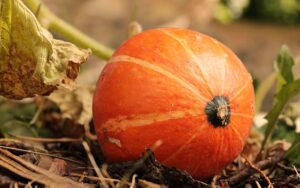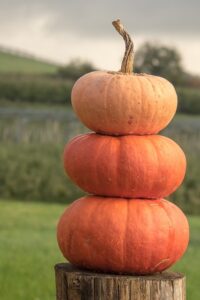Fall Garden Tips
Fall is the ideal time to get your garden and yard ready for the cooler months ahead. It’s also a great opportunity to prepare your soil and planters for next spring’s planting. A fall garden can be beneficial in many ways, from improving soil quality to providing addon nutrients for plants that will help them thrive throughout winter. There are many crops you can plant in the fall for a harvest. Some crops do better in the cool fall air and some even benefit from a light frost.
How Do you Start a Fall Garden
Starting a fall garden requires some planning and preparation. First, research which plants are suitable for fall planting in your region and choose the varieties that you would like to grow. Next, prepare your garden bed by removing any leftover summer crops and weeds. Amend the soil with compost or organic matter for added nutrients. After preparing the soil, you can begin sowing your seeds or transplanting your seedlings, following the recommended spacing and depth for each variety. Remember to water consistently and protect your plants from potential frost or pests.
What Can You Grow in a Garden in the Fall?
There are several plants that can thrive in the cool, crisp air of fall. These include root vegetables like carrots, beets, and turnips which continue to grow well into the colder months. Leafy greens such as spinach, kale, and collard greens also fare well in the fall season, and with a bit of protection, can often continue producing until the first hard freeze. Radishes grow so quickly that they can be a part of your fall garden. Most brassicas such as broccoli, cabbage, and Brussels sprouts tolerate frost. Just remember to pick varieties to plant that will mature in the time you have available. Read your seed packets and know your area’s average first frost date and use protection if an unexpected drop in temperature is forecasted.
In addition, certain herbs like rosemary, thyme, and sage can be grown in the fall, adding flavor to your autumn meals. Remember to provide these plants with adequate care and protection to ensure a bountiful harvest. If you want a sweeter harvest, try planting late-season fruits such as apples, pears, and grapes. These fruits ripen in the fall and can provide a delicious harvest despite the cooler temperatures.

What You Should Not Plant in the Fall
While there are plenty of plants that thrive in the fall, there are also several that don’t handle the cooler temperatures well. Most summer crops, including tomatoes, cucumbers, and peppers, won’t survive the frosty conditions. Warm-weather flowers, such as marigolds, petunias, and geraniums, also struggle in the fall. Additionally, many perennial plants need a period of warm growth before they can face the cold, so it’s typically not a good idea to plant them in the fall. Avoid planting any tropical plants or citrus trees, unless you have a greenhouse, as they can’t withstand the colder weather.
What Can You Plant in October
In regions with mild winters like mine, even October is not too late to plant some vegetables. Many types of vegetables like lettuce, radishes, and broccoli can be planted in October for late fall or early winter harvest. Garlic and onions, which are very cold-hardy, can also be planted in October to overwinter and provide a crop the following summer. However, remember to always check the specific recommendations for each plant and consider your local weather conditions to ensure successful growth.

Different Methods of Fall Gardening
When it comes to fall gardening, there are many different approaches you can take. You can focus on soil improvement, planting cold-weather crops, maintaining perennials and other plants that may need a little extra care during the colder months, or even adding elements such as mulch to protect your soil from erosion. The important thing is to choose the approach that works best for you and your garden. Sometimes by the end of summer harvest you just want a rest!
Understanding the Fall Climate
Understanding the climate and conditions in your area is key to successful fall gardening. Pay attention to the temperature, amount of rainfall, and other weather patterns so you can make sure your plants will thrive in these conditions. While some plants may require extra protection during the cooler months, others might benefit from mild temperatures by producing larger-than-average yields. Knowing what works best for your garden will help you plan and prepare accordingly.
Fall Weather Patterns and Impact on Gardening
Due to the changing weather patterns in fall, it’s important to keep an eye on your garden and how it is impacted. Rainfall can be especially damaging if plants become too saturated and prone to fungal diseases. Cold temperatures can also lead to frost damage or other issues that could impact your plants’ health. Monitoring your garden during these months will help you identify problems quickly and take appropriate action.
Additionally, the changing temperatures can also affect soil and pest management. For example, using mulch during fall planting helps regulate soil temperature and prevent weeds from germinating. It’s also important to check for pests that may have overwintered in your garden so that you can control them before they do any damage. Taking these steps can ensure your plants stay healthy and productive even during the cooler months.
Basic Gardening Techniques for Fall
Soil Preparation
When it comes to fall gardening, preparing the soil is essential for success. Make sure your garden beds are clear of weeds and debris before planting new crops. Loosen the soil with a spade or rake to aerate it and improve drainage. Adding compost can also help promote healthy root growth and encourage beneficial organisms such as earthworms.
It’s also important to sow them at the correct depth and spacing for optimal results. For example, carrots should be planted 1/2 inch deep and spaced 3 inches apart. Be sure to read your seed packet regarding maturity dates and coordinate with your area frost dates.
Watering
Watering in the fall is just as important as during any other season. Make sure to check the soil regularly and water only when needed. If possible, use a soaker hose or drip irrigation system to avoid overwatering and ensure an even distribution of moisture.
Remember, with fall comes shorter days and cooler temperatures. As the days become shorter, adjust watering accordingly by reducing the amount of water you give your plants. This will help them better tolerate cold nights and keep them from being overwatered.
Fertilizing
Fertilizing is essential for helping your plants recover after summer heat waves or fall cold snaps both of which can happen in the same month where I live! Adding slow-release organic fertilizers such as compost tea can help provide your plants with the nutrients they need.
It’s also important to monitor pH levels and adjust them as needed with lime or sulfur. This will help ensure your plants have access to all the necessary minerals for healthy growth.
Mulching
Mulching is a great way to protect against weeds, conserve moisture and keep soil temperatures more consistent. Be sure to use organic mulches such as wood chips or straw. These will help prevent soil-borne diseases and provide additional nutrients to your plants as they break down over time.
Pruning & Deadheading
Pruning and deadheading are important activities for the fall garden. By pruning, you can remove old branches and shape plants while promoting healthy growth. Deadheading involves removing spent flowers and seed heads, which will help stimulate new blooms.
Planting Trees & Shrubs
Fall is the perfect time to plant trees and shrubs as the soil temperatures are more moderate than during the summer. When planting, make sure you dig a wider hole than necessary so that your roots can spread out. Apply mulch around the base of your new tree or shrub to help retain moisture and protect it from extreme temperatures.
Pest Control and Disease Management
Common Pest in the Fall
Fall can bring its own pest problems. Aphids, moths, and other insects are common in September and October. To control these pests, you can use organic insecticides or natural deterrents such as planting companion plants to repel bugs or using floating row covers to keep them from getting to your plants.
Common Diseases in the Fall
Diseases like powdery mildew, leaf spot, and blight can also be a problem in the fall. To help prevent these diseases, make sure to keep weeds under control and follow proper watering techniques. Keeping your garden beds free of debris will also help as dead leaves can harbor disease spores.
Treating Pest
If you notice signs of pests or disease, it’s important to act quickly. Treating the problem early is key to preventing it from spreading to other plants in your garden.
And don’t forget to mulch! Adding a layer of mulch around your plants can help retain moisture and protect them from extreme temperatures. Mulching also helps reduce weeds, which can harbor pests and diseases.
With proper fall preparation and maintenance, you can ensure your garden stays healthy and productive throughout the season. So get out there and start planting!
For more information on pest control click here.
Preparing your Garden for Winter
Preparing your garden for winter can be a daunting task. To ensure the health of your plants, it’s important to take steps to protect them from cold weather and damaging winds. Here are some tips to help you prepare:
- Mulch generously around plants, especially perennials that die back in the winter months. This helps keep soil temperatures even and protects roots from freezing.
- Prune perennials and shrubs to reduce wind damage. Leave some of the foliage in place to act as a natural windbreak.
- If necessary, build protection out of burlap, chicken wire or other materials to shield plants from heavy winds or cover them with a blanket.
- Cover tender plants with frost blankets or other protective material when temperatures drop below freezing.
- Plant evergreen trees to act as windbreaks and shelter around your garden to provide additional protection.
- Consider planting a fall cover crop on any bare beds or ground. This will aerate and fertilize your soil.
By taking the time to prepare your garden for winter, you can help protect your plants from harsh weather conditions. This will ensure they make it through the cold months in good health and ready to greet the new season with vigor.
Conclusion
Gardening in the fall is a great way to ensure your garden stays healthy and productive throughout the winter months. With proper preparation and maintenance, you can give your plants the protection they need to survive until spring. So get out there and start planting! Happy Gardening!
For more on gardening topics click here.
For zone 7 fall gardening click here.
Resource: https://www.almanac.com/how-plant-fall-vegetable-garden

